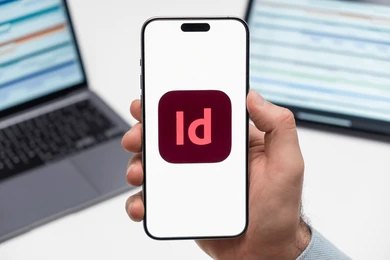How To Create A Book With Adobe InDesign

If you’re ready to transform your manuscript into a professionally designed book, Adobe InDesign is one of the most powerful tools you can use. Whether you’re publishing a novel, a memoir, a photography book, or an academic project, InDesign allows you to handle everything from page layout to typography with precision.
In this guide, we’ll walk you through how to create a book with Adobe InDesign, from planning and preparing your content to exporting your final PDF for print or digital publishing. Whether you’re a first-time user or looking to sharpen your book design skills, this blog will give you a solid foundation.
Table of Contents
Toggle📚 Why Choose Adobe InDesign for Book Creation?
Before diving into the step-by-step tutorial, it’s important to understand why Adobe InDesign is the go-to software for professional book designers and publishers:
- Precision in Layout and Typography: InDesign offers unmatched control over fonts, spacing, margins, and alignment.
- Master Pages for Consistency: Create headers, footers, and page numbers that apply across your entire book.
- Multi-page Management: Manage hundreds of pages with ease using the Pages panel.
- Seamless Integration: Works well with Adobe Illustrator, Photoshop, and Bridge for images and design assets.
- Professional Output: Export print-ready PDFs or EPUBs for e-readers.
📝 Step 1: Plan Your Book
Great book cover design starts long before you open InDesign. Begin with:
- Manuscript Finalization: Make sure your content is edited and proofread.
- Page Size & Format: Decide if you want a standard size like 6″x9″, 5.5″x8.5″, or a custom layout.
- Binding Type: Will your book be perfect-bound, saddle-stitched, or hardback?
- Margins & Bleeds: Think about white space and trim marks—critical for print accuracy.
Pro Tip: Publishers often use the “Book Trim Size” based on the target market. Fiction often uses 6” x 9”, while photo books may go up to 10” x 10” or larger.
🛠️ Step 2: Set Up Your InDesign Document
Launch Adobe InDesign and create a new document:
➤ Go to: File > New > Document
Set the following:
- Intent: Print or Web (Choose “Print” for physical books)
- Number of Pages: Input the total page count (you can add more later)
- Facing Pages: Check this to set up a book with spreads
- Page Size: Choose a preset or set custom dimensions (e.g., 6″ x 9″)
- Margins: Set top, bottom, inside, and outside margins (recommended: 0.75” outside, 1” inside)
- Bleed: Typically set to 0.125″ (or 3mm)
🧱 Step 3: Use Master Pages for Layout Consistency
InDesign’s Master Pages let you create repeating elements such as:
- Page Numbers
- Chapter Titles
- Headers/Footers
- Borders or Design Frames
➤ How to Set a Master Page:
- Open the Pages panel (Window > Pages)
- Double-click on A-Master
- Add page numbers using Type > Insert Special Character > Markers > Current Page Number
- Design header or footer elements here
All pages using this Master will now inherit these designs. This ensures consistency across your entire book.
📂 Step 4: Import and Format Your Text
Once your layout is ready, bring in your manuscript.
➤ Importing Text:
- Go to File > Place (or press Cmd/Ctrl + D)
- Select your manuscript file (Word docs and RTF work best)
- Click into the first page to place the text
If your book has chapters, consider using InDesign’s Book feature to link separate chapter files for easier management (File > New > Book).
➤ Style Your Text with Paragraph Styles
This is where InDesign shines.
- Select a paragraph
- Open Window > Styles > Paragraph Styles
- Create a new style (e.g., Body Text, Chapter Title, Subheadings)
- Apply these styles to format your entire manuscript consistently
Typography Tips:
- Use serif fonts for body text (e.g., Garamond, Minion Pro)
- Keep font size between 10–12pt for readability
- Maintain proper line spacing (leading should be 120–130% of font size)
📸 Step 5: Insert Images, Illustrations, or Graphics
For illustrated books or photo-heavy projects, use File > Place to insert images.
Image Guidelines:
- Use high-resolution images (300 DPI for print)
- Use InDesign’s frame tool to crop or scale
- Don’t drag and drop; always “Place” for optimal linking
- Keep image-heavy pages within margin and bleed settings
Organize visuals logically—add captions using character styles for consistency.
🧭 Step 6: Add Front Matter and Back Matter
A professionally structured book includes more than just chapters. Add:
➤ Front Matter:
- Title Page
- Copyright Page
- Dedication
- Table of Contents (InDesign can auto-generate this)
- Preface or Introduction
➤ Back Matter:
- Acknowledgments
- About the Author
- References
- Index (for non-fiction)
- Author’s Note or Next Book Teaser
These sections should also follow their own Master Page or style setup.
🪄 Step 7: Export Your Book for Print or eBook
Once your content and layout are finalized, it’s time to export.
➤ For Print:
- Go to File > Export
- Select Adobe PDF (Print)
- Choose High-Quality Print or Press Quality
- Ensure:
- Bleed and slug settings are checked
- Marks and bleeds are selected
- Fonts are embedded
➤ For eBook:
- Go to File > Export
- Choose EPUB (Reflowable) or EPUB (Fixed Layout) depending on format
- Optimize fonts, images, and table of contents for digital reading
Tip: EPUB is great for Kindle, Apple Books, and other e-readers. For Amazon KDP, upload a print-ready PDF and a separate Kindle-formatted file.
📊 BONUS: Chart — InDesign Features for Book Design
| Feature | Purpose | Why It Matters |
| Master Pages | Apply consistent layouts | Saves time, ensures uniformity |
| Paragraph Styles | Format headings, body text, etc. | Quick formatting, consistency |
| Page Numbers | Auto-number pages dynamically | No manual input needed |
| Layers & Guides | Organize elements cleanly | Helps align text and graphics perfectly |
| Export Presets | Choose right format (Print or eBook) | Ensures compatibility and quality |
🧠 Final Tips and Best Practices
- Backup Frequently: InDesign files (.INDD) can get large and complex.
- Use Preflight Panel: Check for issues like missing fonts or overset text.
- Proof Your Layout: Always review a printed proof before mass printing.
- Learn Keyboard Shortcuts: It speeds up your workflow significantly.
- Explore Templates: Adobe Stock and third-party sites offer InDesign book templates.
✨ Final Thoughts
Creating a book with Adobe InDesign may seem technical at first, but once you get a grasp of its robust features, it becomes a creative and rewarding experience. Whether you’re self-publishing your first novel or designing a coffee table book, InDesign provides the flexibility and professional output you need.
Remember, great content deserves a great presentation. With InDesign, you have the power to design a book that looks as polished as anything from a traditional publisher.

